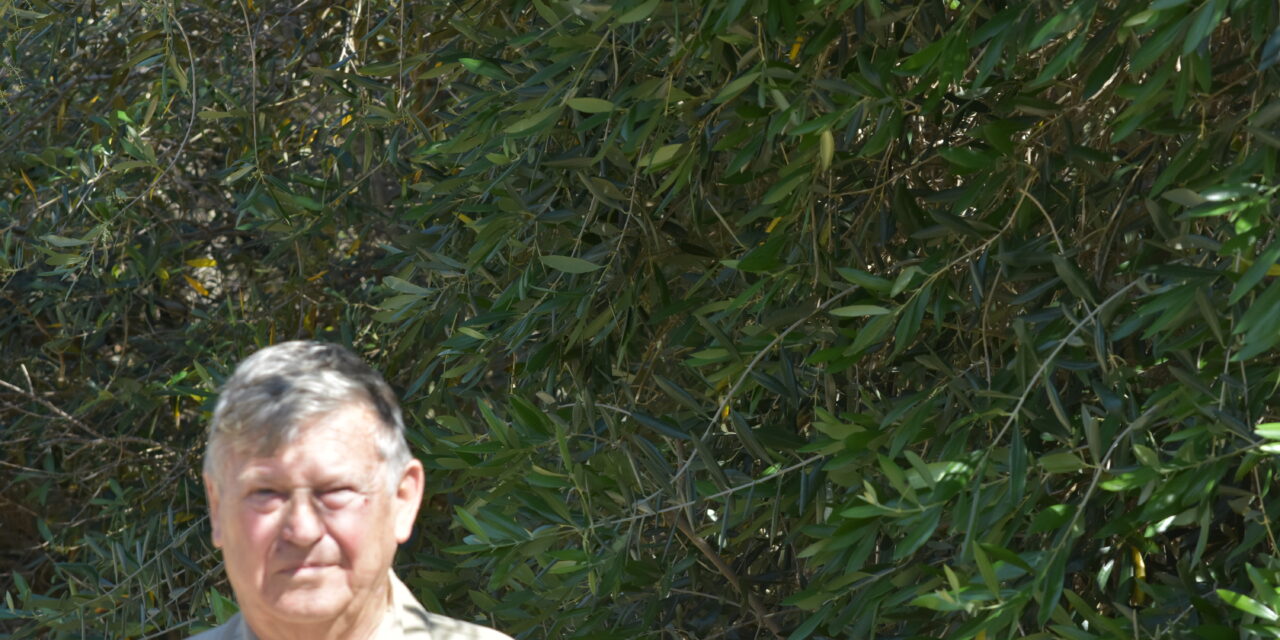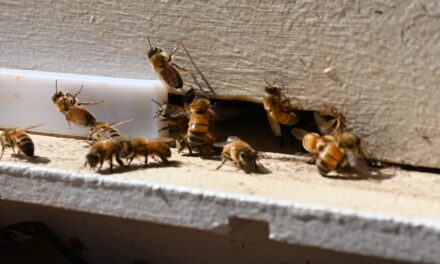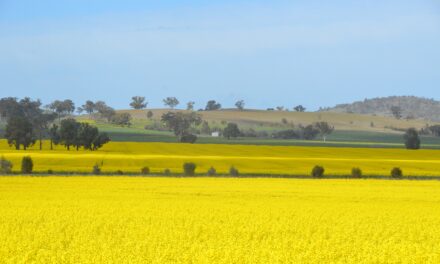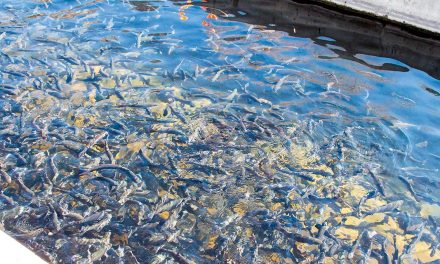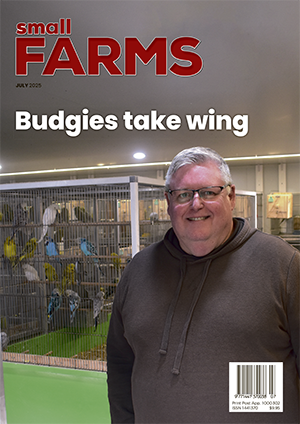In the November issue of Small Farms, we started a journey towards sustainability on a small farm north of Perth. GLENN KEARNEY continues his journey this month.
Sustainable practice must be a holistic if you are to succeed on a small farm that includes dealing with pest and diseases.
This is how it’s handled on Cayden Jack Farm, a 10-hectare family business growing mangos, olives and sheep at Wanerie in Western Australia.
Pest and diseases
On Cayden Jack Farm (CJF) in late spring early summer each year we have an invasion of grasshoppers, which take a liking to the young saplings, of which we always have up to 50.
They chew through all the young leaves and, while not killing the saplings, they set back growth by a year.
Our solution is twofold.
Firstly a physical barrier in the form of 2m of fencing wire rolled and wired in a circle and covered in black shade cloth and pegged to the ground. This achieves two objectives — being a barrier to the grasshoppers and a micro climate for the saplings to grow in until about 1.2m tall.
The second solution is to encourage our local wild guinea fowl of around 30 birds to spend more time in the orchard by feeding them daily about 500g of grist maize. This is a very cheap and effective means to an end.
In the past two years, we have had no damage from grasshoppers.
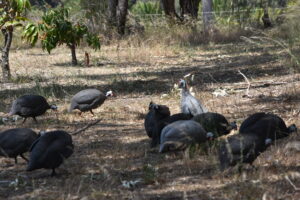
Local wild guinea fowl help keep grasshoppers away from young trees in the orchard.
Over the past six years we have lost many chickens and lambs to foxes, feral cats and eagles and, on one occasion, a ewe to wild dogs.
While it would be easy to use 1080 poison on a small farm it is not practical because of neighbourhood dogs and visitors’ dogs.
We have found two solutions to reduce the losses.
The first was to install several fox lights in the paddock, which deters the nocturnal foxes.
The second was to reinforce the chicken pen with two rows of old pavers around the edges to eliminate digging. This has prevented any losses from the pen at night.
We have also set traps near the chicken pen with some success in trapping feral cats, however, foxes are too sly (except for one).
Eagles are protected and there does not seem to be any legal solution.
Orchard disease
When we took over the orchard it was riddled with black spot and some powdery mildew.
During the first two years, a cycle of spraying with alternatives of Mancozeb and Coppox, as well as a heavy pruning of affected branches, eventually brought it under control.
Maintenance spraying each subsequent year with Coppox and also a general fungicide has the trees in good condition.
Any material pruned with black spot was burned to prevent the spread of the disease.
The mowing regime
During the winter months the weeds and grass grow rapidly and continuously and require constant mowing for several reasons.
Firstly, the aesthetics. Secondly, controlling the nutrients removed. Thirdly, by mowing the grass and weeds it provides a bed of humus which has a thermal effect and the humus helps retain water moisture in the soil. Over time this practice helps improve soil condition.
The remaining weeds under the tree canopy which cannot be reached by mechanical means need to be eradicated with your preferred weed killer.
Flying pests
Pests on CJF includes huge flocks of cockatoos who attack the pasture land after planting the new legumes, particularly oats which are large seeds.
We found the solution is to plant small black seeds, which are difficult to see when buried.
We found that lucerne and serra della margherita both grew well and served the purpose of avoiding bird attacks, improved the soil by adding nitrogen and provided a good fodder crop for the sheep during the summer months.
Flies, fruit flies and stable flies are dealt with as follows.
Flies arrive in late spring or early summer in plague proportions for a period of six to eight weeks and there is nothing you can do.
The flies arrive when the mangos are flowering, which aids in pollination together with bees and wind.
Fruit fly we bait with commercial bait traps at a cost of about $10 each (you can make home-made traps very successfully for a lot less cost).
We place the traps on every 10th tree on the outside perimeter of the orchard.
Stable fly is not such a great problem. However, as the larva hatch in dank animal faeces and humus, you can limit the larva by aerating suspected areas and allowing the sun to dry out the area.

